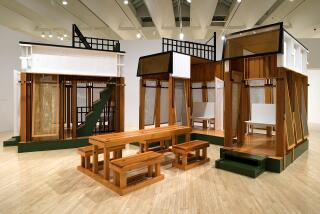To protect and to serve
- Share via
IN March 2001, Paola Antonelli, a design curator at the Museum of Modern Art, appeared before MoMA’s exhibition committee to propose a show about the design of objects connected with safety and rescue -- those laminated cards depicting emergency escape routes that you find in the seat-back pockets on airplanes, for example. She wanted to call the show “Emergency.” The committee responded enthusiastically, and Antonelli got to work.
Then came Sept. 11. With the World Trade Center in ruins, the curator understandably forgot about the idea. When friends inquired a few days later, she said she thought pushing ahead with the theme might appear opportunistic at best and tasteless at worst. But after stories in the New York press on the response of the design and architecture professions to Sept. 11 mentioned the planned exhibition, she started hearing from people encouraging her not to give up on it.
“In a way, New Yorkers were telling me that they were ready for a show like this, even if I wasn’t,” Antonelli says now.
The result was that when she was asked to help direct the Aspen Design Conference in the summer of 2003, she used the event as a way to retool the show, at a remove of 2,000 miles from Lower Manhattan. She began exploring the notion that in an age of terror, product designers are increasingly forced to deal not just with risk -- something predictable and even measurable -- but also with the murkier category of fear.
The exhibition, now called “Safe: Design Takes On Risk,” will include objects designed to protect their users -- physically or just psychologically -- against everything, as Antonelli puts it, “from paper cuts to genocide.” There will be a new parachute for people who work in tall buildings; a smartly minimal lifeguard station by four Danish architects; a pill-bottle design developed for Target stores; a steel bench from France that doubles as a security barrier; and bracelets that allow doctors to tell quickly whether children are suffering from malnutrition.
The tone of the show, the curator says, will be detached and even a little deadpan -- probably not a bad idea when you are dealing with themes such as terrorism and disease. It will point out, for instance, that in a recent British poll, 71% of those queried reported having hurt themselves trying to open product packaging.
*
Museum of Modern Art, New York, Oct. 16-Jan. 2, www.moma.org
More to Read
The biggest entertainment stories
Get our big stories about Hollywood, film, television, music, arts, culture and more right in your inbox as soon as they publish.
You may occasionally receive promotional content from the Los Angeles Times.











